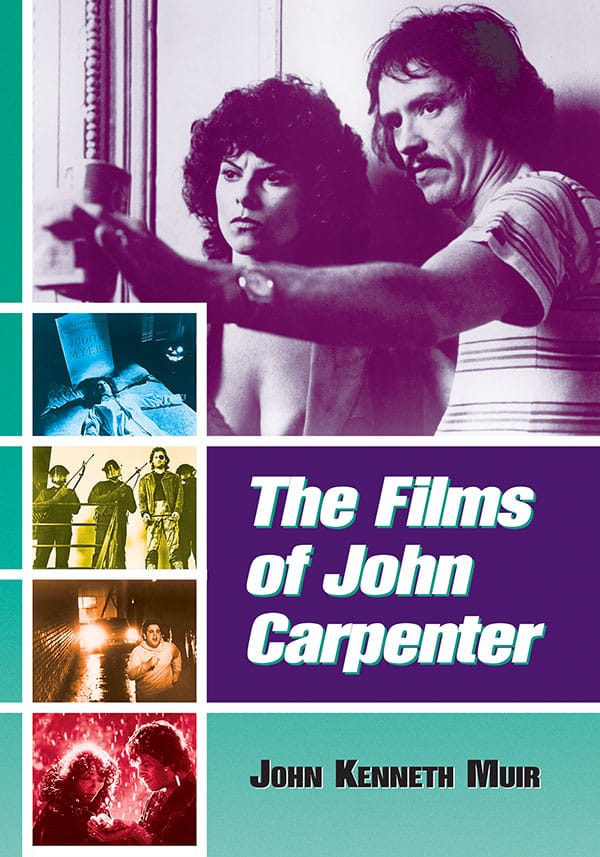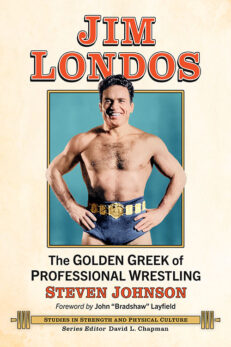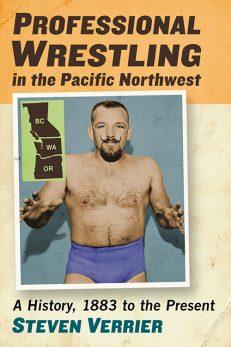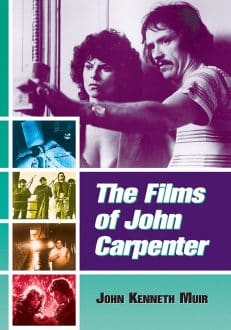Subtotal: $39.95
The Films of John Carpenter
$29.95
In stock
About the Book
The films of John Carpenter cover a tremendous range and yet all bear his clear personal stamp. From the horrifying (Halloween) to the touching (Starman) to the controversial (The Thing) to the comic (Big Trouble in Little China), his films reflect a unique approach to filmmaking and singular views of humanity and American culture. This analysis of Carpenter’s films includes a historical overview of his career, and in-depth entries on each of his films, from 1975’s Dark Star to 1998’s Vampires. Complete cast and production information is provided for each. The book also covers those films written and produced by Carpenter, such as Halloween II and Black Moon Rising, as well as Carpenter’s work for television. Appendices are included on films Carpenter was offered but turned down, the slasher films that followed in the wake of the highly-successful Halloween, the actors and characters who make repeated appearances in Carpenter’s films, and ratings for Carpenter’s work. Notes, bibliography, and index are included.
About the Author(s)
Bibliographic Details
John Kenneth Muir
Format: softcover (7 x 10)
Pages: 275
Bibliographic Info: photos, appendices, notes, bibliography, index
Copyright Date: 2005 [2000]
pISBN: 978-0-7864-2269-2
eISBN: 978-0-7864-9348-7
Imprint: McFarland
Table of Contents
Acknowledgments vii
Introduction 1
I: A History and Overview of John Carpenter’s Career 5
II: The Films of John Carpenter 53
III: Films Written and Produced by John Carpenter 195
IV: John Carpenter on Television 231
V: Epilogue: We Are Transmitting from the Year 1999… 239
Appendix A: Some Directing Opportunities John Carpenter has Turned Down 241
Appendix B: Slasher Films that Followed John Carpenter’s Halloween 242
Appendix C: The John Carpenter Repertory Company 244
Appendix D: Recurring Characters in the Films of John Carpenter 246
Appendix E: Rating John Carpenter 248
Notes 251
Bibliography 332
Index 341
Book Reviews & Awards
- “recommended”—Choice
- “informative and entertaining”—ARBA
- “cogent and insightful…contain[s] excellent resources”—SFRA Review
- “excellent…get this most enjoyable book”—Hitch
- “I found this book an enjoyable experience”—SFCrowsnest
- “thorough…enjoyable”—Crimson Celluloid
- “tells you the story behind the story…will have you heading for the Horror and Sci-Fi section”—Cult Movies
- “extensive credit lists”—Video Watchdog
- “impressive”—Fandom
- “complete credits, a very lengthy synopsis, and an equally lengthy commentary”—Classic Images
- “a detailed history…will delight Carpenter fans seeking hidden meanings in his multi-layered works”—The Intelligencer Record
- “a very interesting read”—Little Shoppe of Horrors

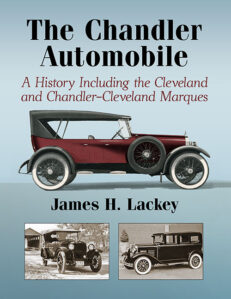 The Chandler Automobile
The Chandler Automobile 
